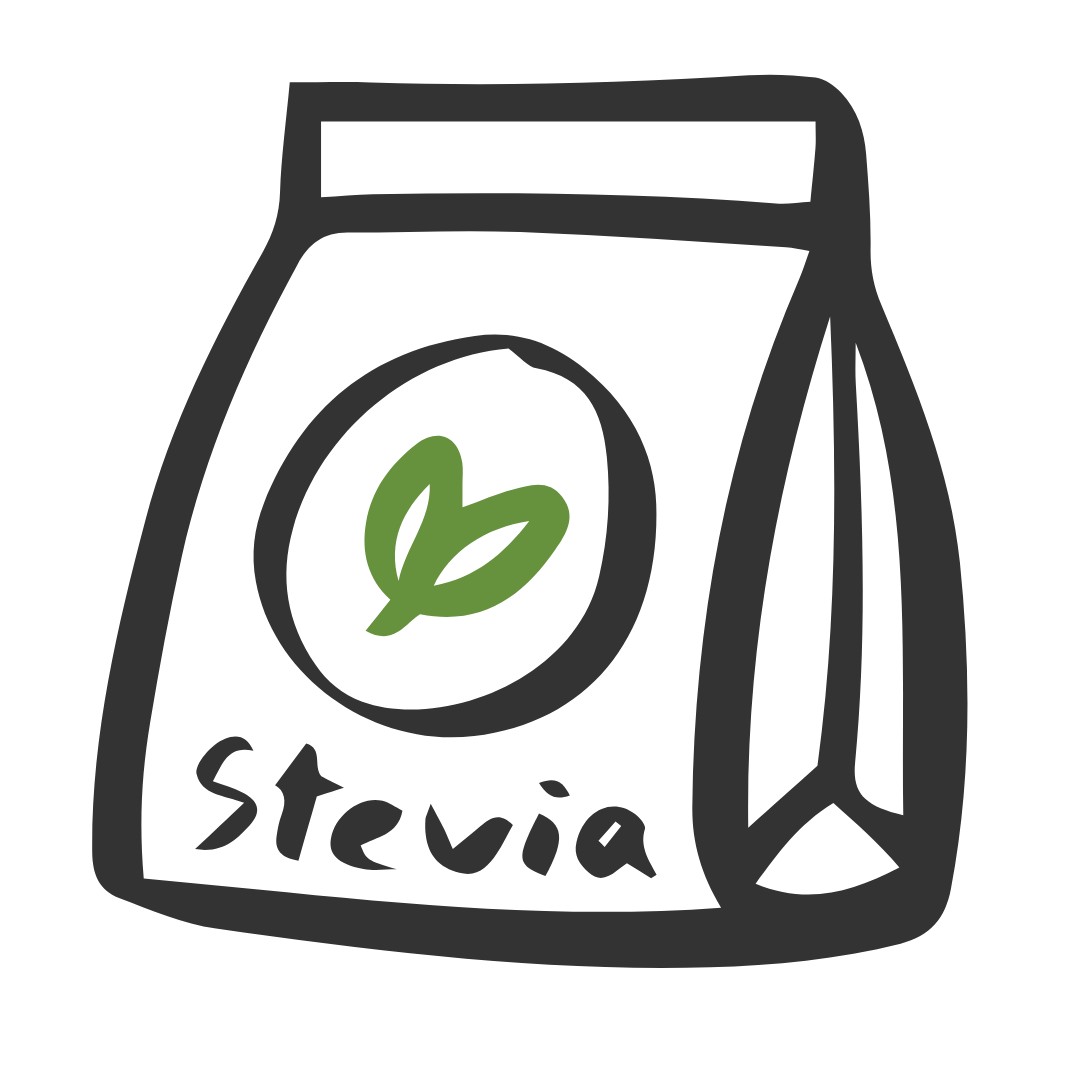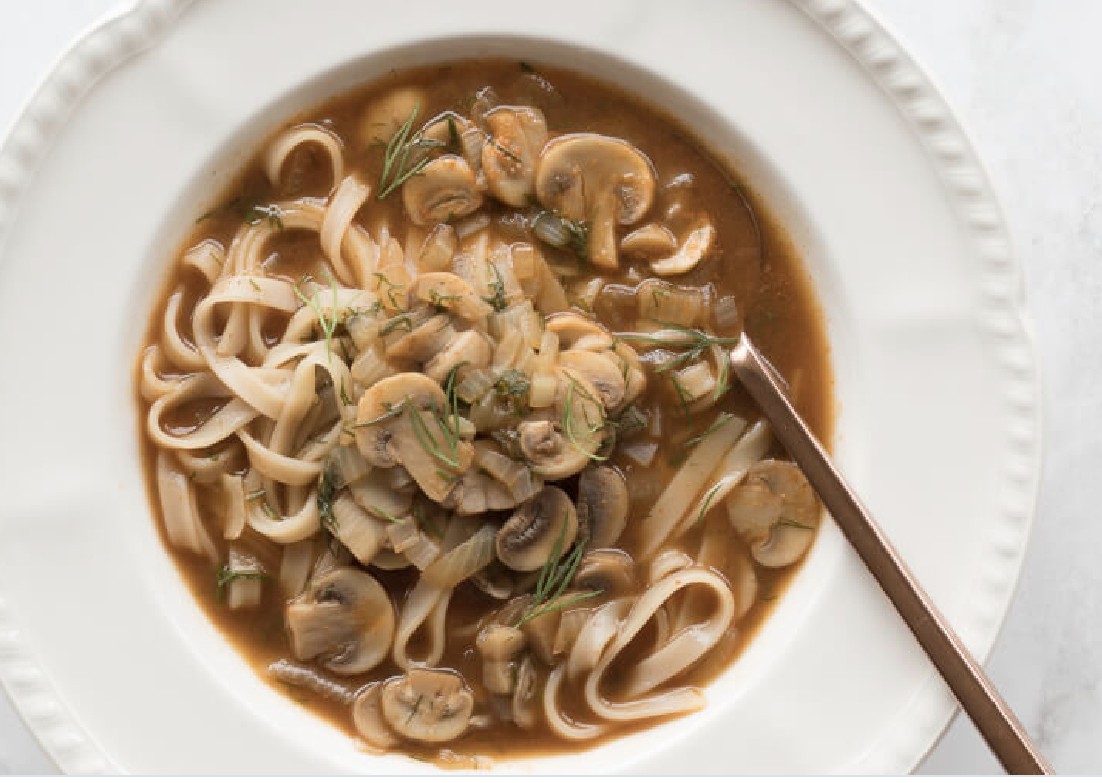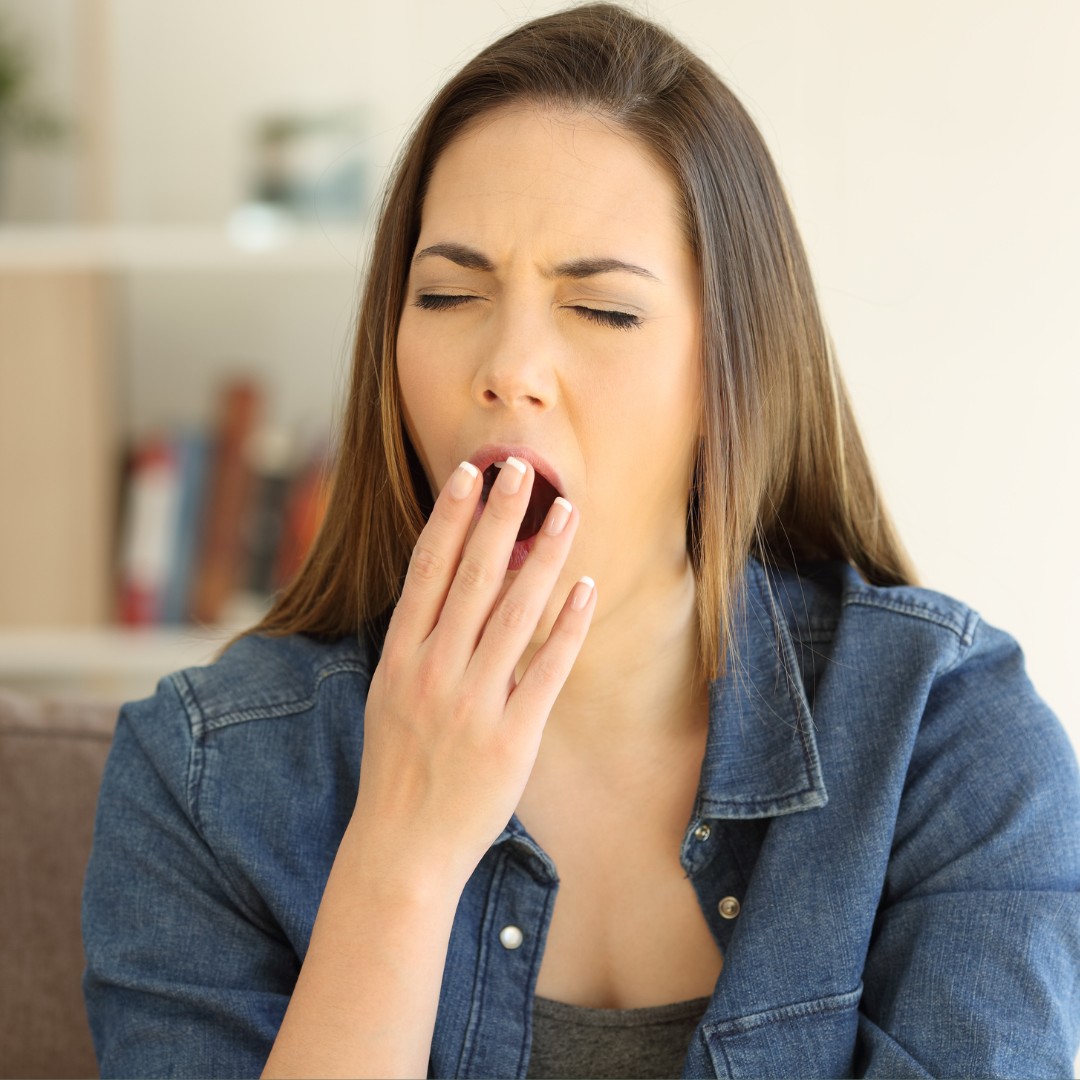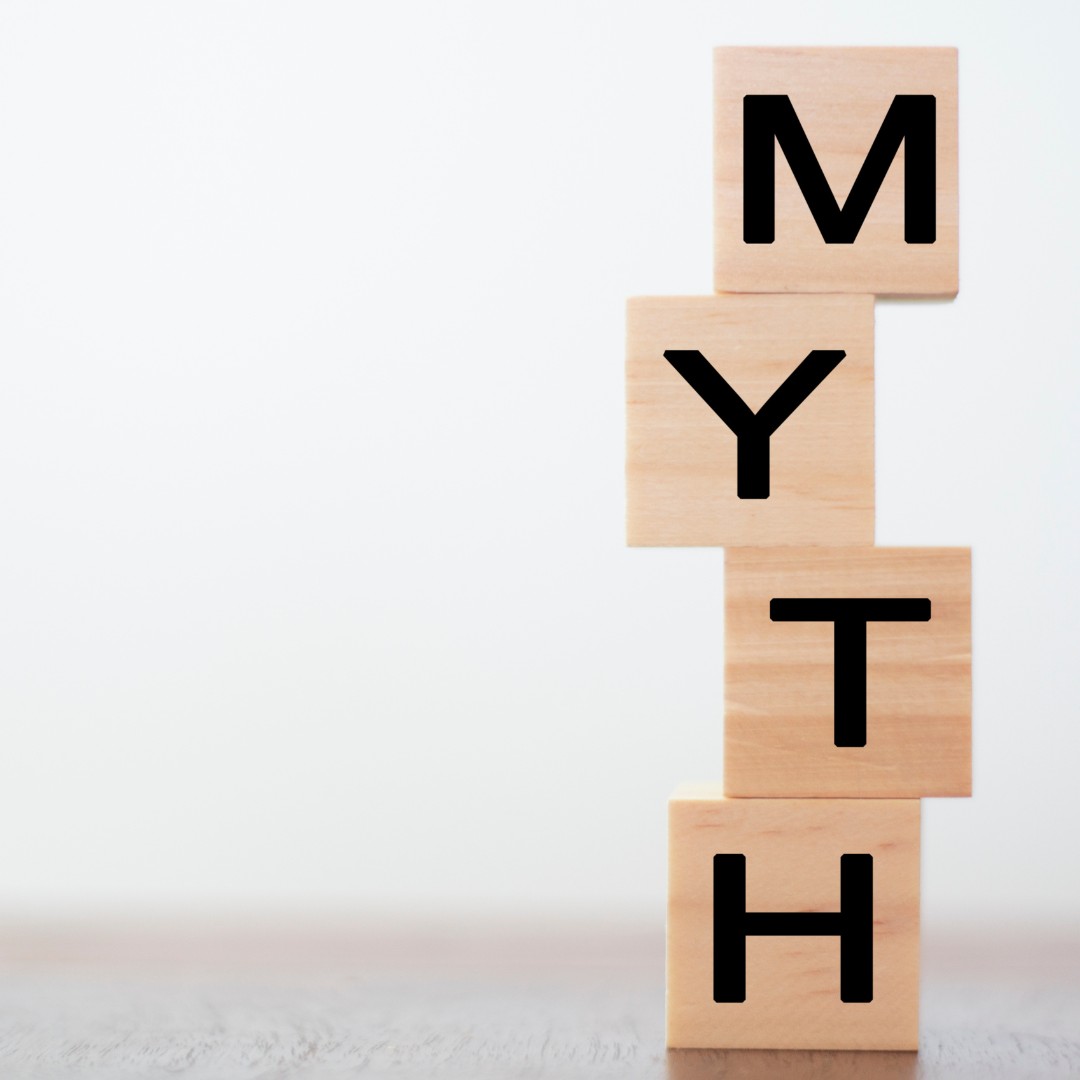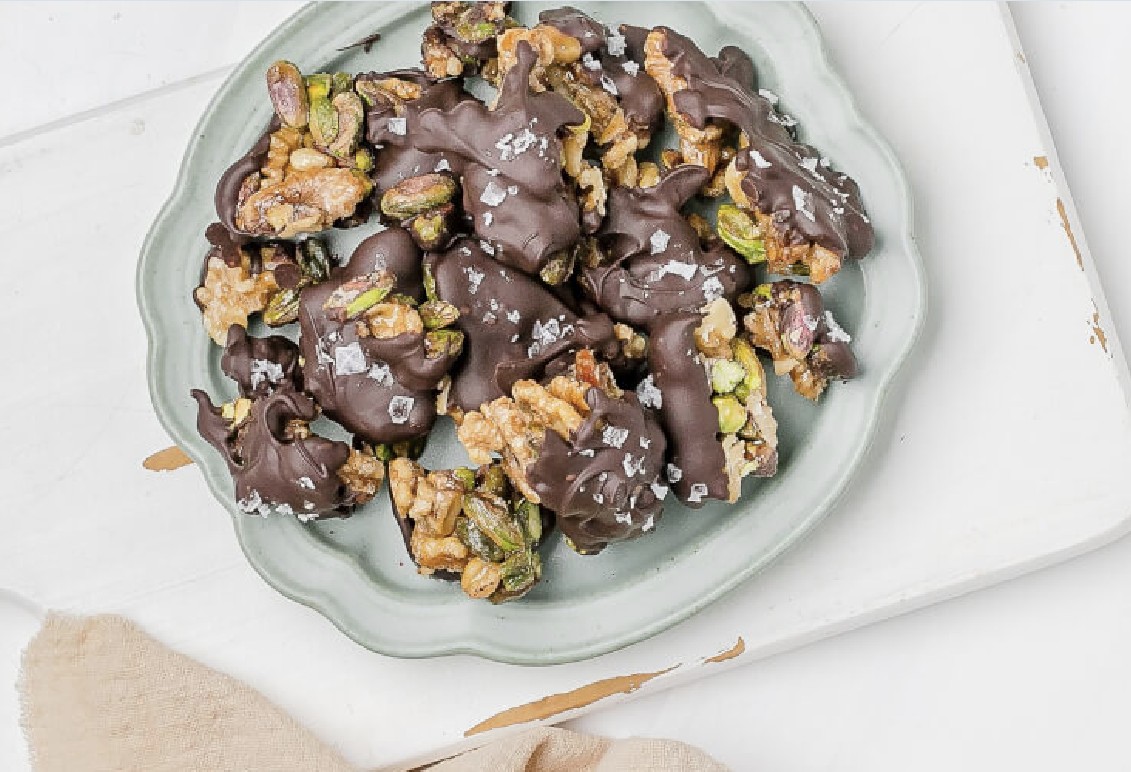
This recipe supports heart health with pistachios and walnuts that provide heart-healthy fats to help maintain healthy cholesterol levels, while dark chocolate and walnuts add antioxidants that protect your cells from everyday stress. The balanced mix of healthy fats, protein, and carbohydrates offers steady, sustained energy, and the touch of maple syrup and dark chocolate adds natural sweetness without sacrificing nourishment.
Ingredients:
- 1 cup Pistachios
- 1 1/4 cups Walnuts
- 3 tbsps Maple Syrup
- 1/2 tsp Vanilla Extract
- 1 tsp Cardamom
- 1/2 cup Dark Chocolate Chips
- 1/2 tsp Coconut Oil
- 1/4 tsp Sea Salt (flaky)
Instructions:
- Preheat the oven to 350ºF (180ºC) and line a loaf pan with parchment paper.
- In a medium-sized bowl, combine the pistachios, walnuts, maple syrup, vanilla, and cardamom. Mix well.
- Add the nut mixture to the prepared loaf pan, pressing down with a spatula. Transfer to the oven and bake for 25 minutes, until lightly toasted.
- Let the mixture cool completely in the pan, ideally one hour, before removing. Break into clusters.
- Line a small baking sheet (or large plate) with parchment paper.
- Melt the chocolate and coconut oil in a saucepan on low or in the microwave for 30-second intervals.
- Dip each cluster into the melted chocolate, garnish with salt, and place on the prepared baking sheet. Transfer to the fridge for 10 to 15 minutes or until the chocolate has set. Enjoy!
10 servings
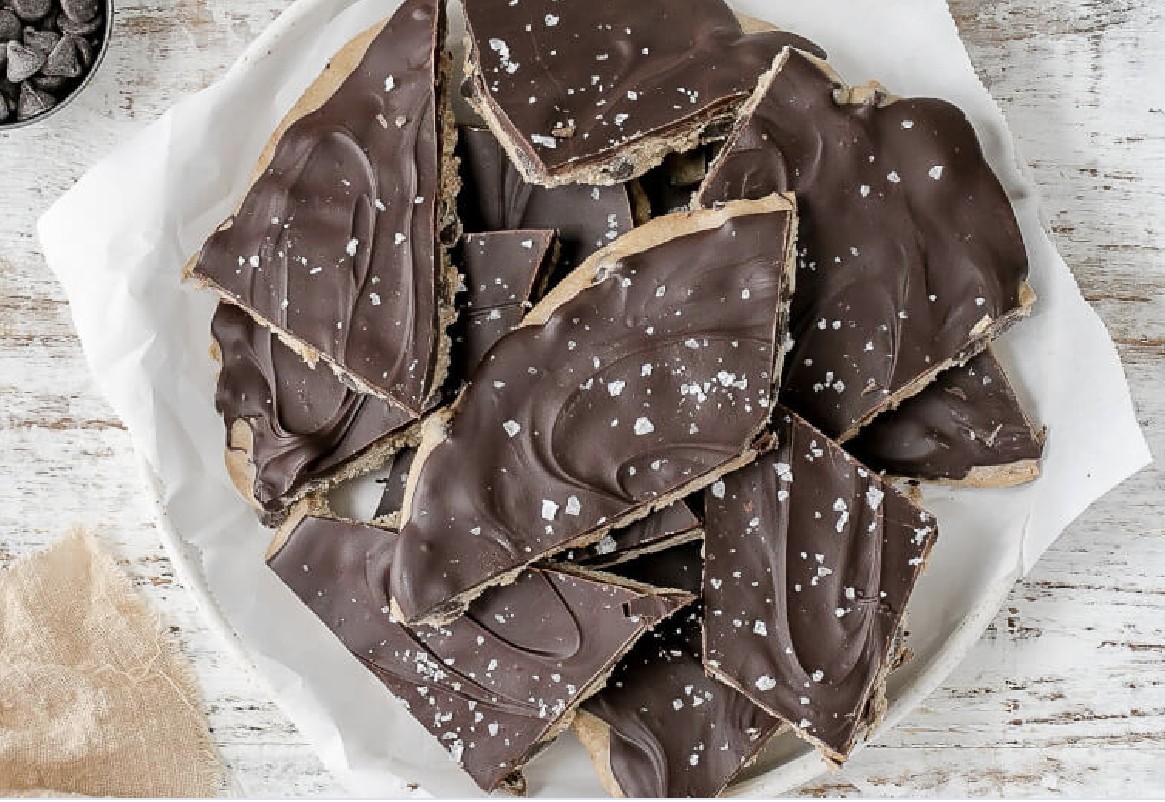
When I say use non-dairy chocolate chips, it’s just because that’s what feels best for my body these days. I usually grab Enjoy Life, but truly, use whatever you love.
What I love about adding dark chocolate to this recipe is how good it makes me feel. It’s packed with antioxidants, gives me steady energy instead of a crash, and honestly? It lifts my mood every single time.
It’s one of those tiny treats that feels indulgent and supportive, which is exactly what I need in the middle of mom life.
Ingredients:
- 1 1/2 cups Oat Flour
- 1/4 cup Raw Honey
- 1/4 cup Coconut Oil (melted)
- 2 tsps Vanilla Extract
- 1 1/2 cups Dark Chocolate Chips (Enjoy Life is my favorite brand of non-dairy ones!)
- 1/4 tsp Sea Salt (flaky)
Instructions:
- Line a baking sheet with parchment paper and set it aside.
- In a bowl, mix the flour, honey, oil, and vanilla with a spatula until well combined. Fold in 1/4 of the chocolate chips.
- Pour the cookie dough mixture onto the baking sheet, and use your hands or a spoon to flatten and spread it to approximately 1/4 inch (0.5 cm) thickness.
- Melt the remaining chocolate in a double boiler or in 30-second intervals in the microwave.
- Pour the melted chocolate onto the dough and use the back of a spoon to spread it out. Transfer to the freezer for 30 minutes or until solid. Sprinkle with salt just before the chocolate sets.
- When solid, break it into pieces and store it in an airtight container in the refrigerator until ready to eat. Enjoy!
12 servings
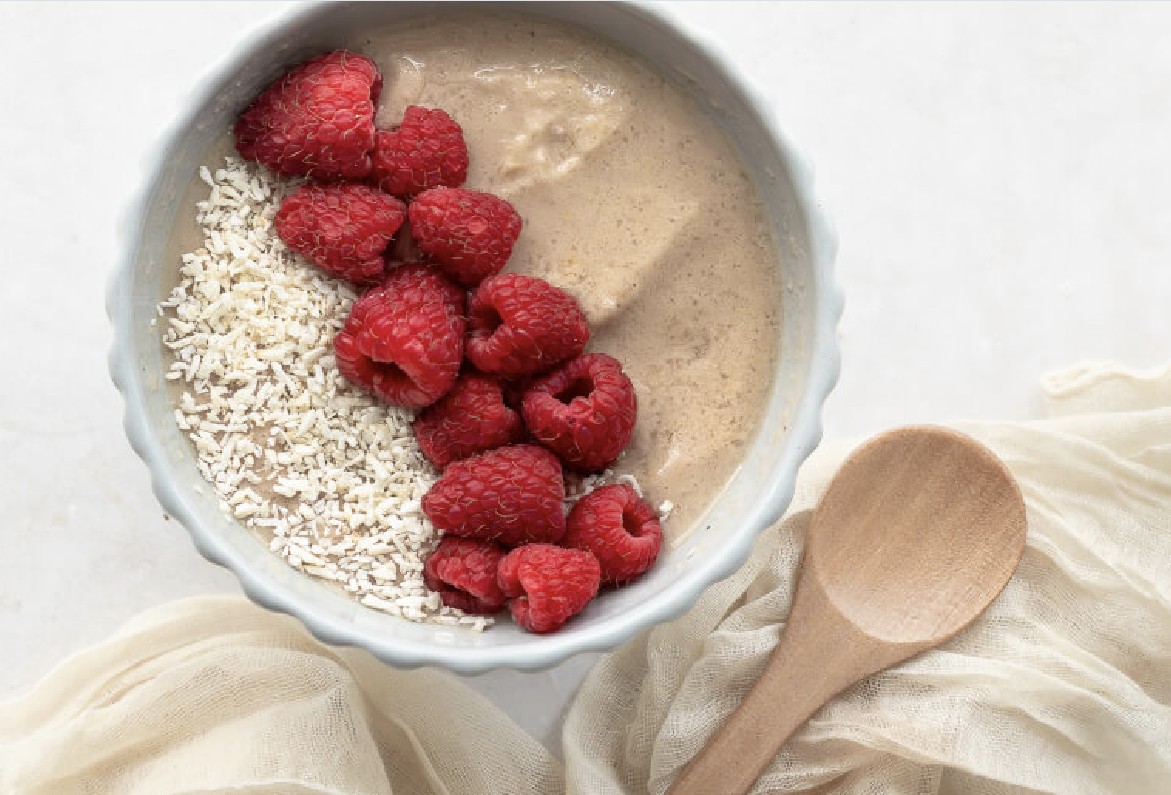
I make this one all the time because it gives me that gentle boost without the crash. The frozen bananas + coffee combo wakes me up, the coconut kefir keeps my gut happy, and the hemp seeds with peanut butter bring in those good-for-you fats your heart will love. It’s simple, nourishing, and actually makes me feel human on the mornings that feel… like a lot.
Ingredients:
- 1 cup Frozen Banana
- 1/4 cup Coffee (brewed)
- 1/2 cup Plain Coconut Kefir
- 2 tbsps All Natural Peanut Butter
- 1 tsp Raw Honey
- 2 tbsps Unsweetened Shredded Coconut (divided)
- 2 tbsps Hemp Seeds
- 1/8 tsp Sea Salt
- 6 Ice Cubes
- 1/2 cup Raspberries
Instructions:
- Add the banana, coffee, kefir, peanut butter, honey, half of the shredded coconut, hemp seeds, salt, and ice cubes to a blender. Blend until smooth.
- Divide evenly into bowls and top with the remaining shredded coconut and raspberries. Enjoy!
2 servings
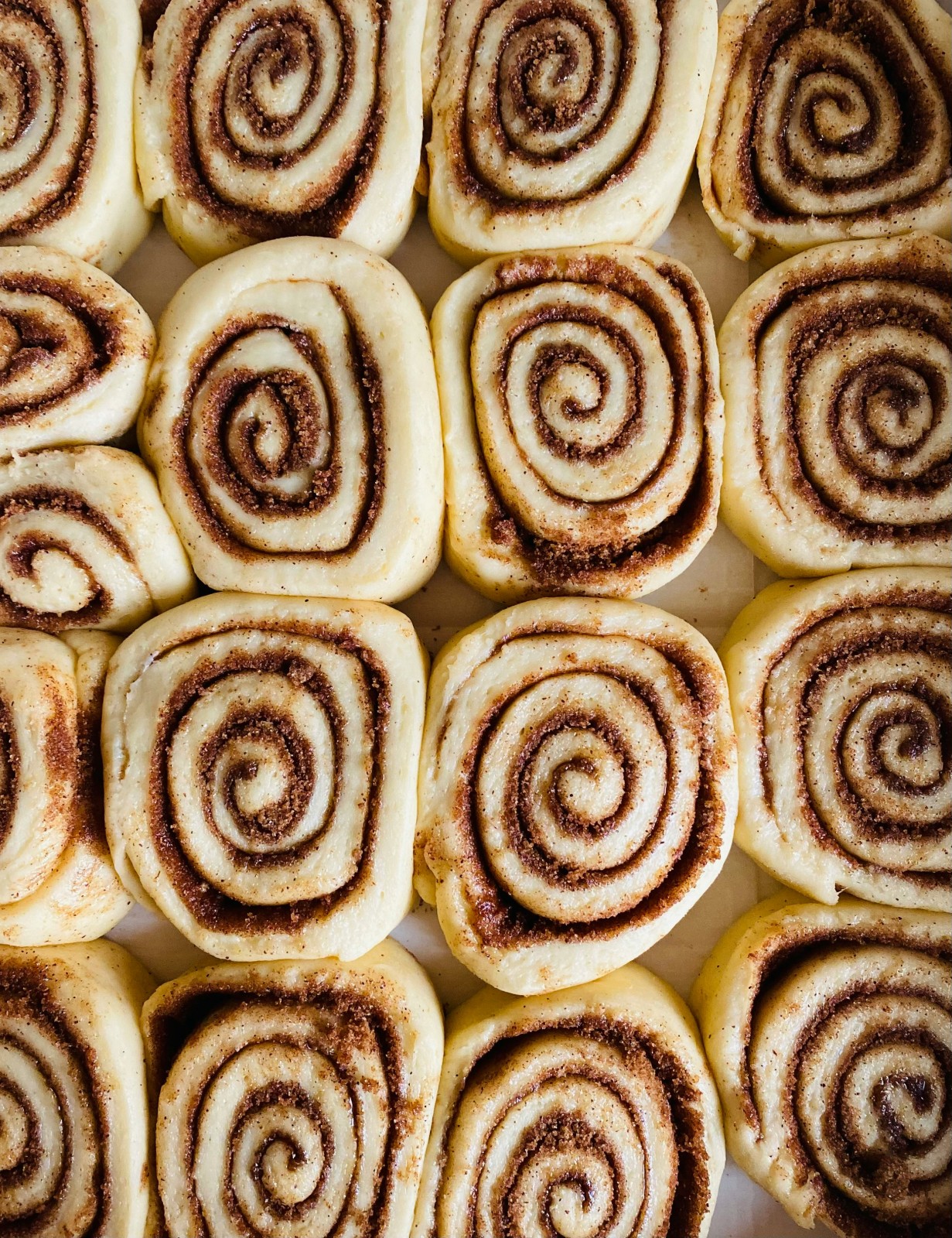
AIP Cinnamon Buns for Hormone Balance & Gut Health
Grain-Free | Dairy-Free | Gluten-Free | Autoimmune Protocol Friendly
If you're on a healing journey-whether it's managing hormone imbalances, supporting your gut, or following the autoimmune protocol (AIP)-you already know how challenging it can feel to find comforting recipes that don’t wreck your system. That’s where these AIP-friendly cinnamon buns come in.
Made with sweet potato, cassava flour, and coconut oil, they’re a cozy, anti-inflammatory treat that supports blood sugar stability and hormone production without the grains, dairy, eggs, or refined sugar that can throw your system out of balance. These are not just "healthy cinnamon rolls"-they’re hormone-supportive, gut-friendly, and full of flavor. Think warm, cinnamon-spiced bliss that actually nourishes your body.
So whether you're easing into an AIP lifestyle, looking for hormone-friendly holiday treats, or just craving something sweet that won’t send your nervous system into a spiral… these cinnamon buns are here to bring the joy and the support!
AIP-Friendly Cinnamon Buns
Hormone-Supportive & Pantry-Friendly
Gluten-free • Dairy-free • Grain-free • Egg-free • Refined sugar-free
Gluten-free • Dairy-free • Grain-free • Egg-free • Refined sugar-free
These cozy cinnamon buns are made from real-food ingredients that actually support your hormones. No weird specialty flours needed - just sweet potato, cassava, and coconut flour.
🍠 Ingredients
- 2 cups mashed sweet potato (or 1½ cups if very moist)
- ⅔ to ¾ cup cassava flour
- 2-3 Tbsp coconut flour
- 2 Tbsp coconut sugar (or maple sugar)
- 2 tsp cinnamon
- ½ tsp baking soda + pinch of sea salt
- ¼ cup melted coconut oil (or palm shortening)
- ½ tsp apple cider vinegar
Filling:
- 2 Tbsp coconut sugar
- 2 tsp cinnamon
- 2 Tbsp melted coconut oil
📝 Instructions
- Preheat oven to 325°F (165°C). Line a small baking dish with parchment paper.
- In a large bowl, combine cassava flour, coconut flour, baking soda, and salt.
- Stir in the mashed sweet potato, melted coconut oil, and apple cider vinegar. Mix well until you form a soft dough.
- Press dough onto parchment paper into a rectangle (approx. 9” × 6”).
- In a small bowl, mix the filling ingredients and spread evenly over the dough.
- Roll the dough up from the long side into a log shape. Slice into 4–6 rolls.
- Place rolls in the baking dish.
- Bake for ~30 minutes until set and golden.
- Let cool slightly. Optional: drizzle with melted coconut butter for bonus cozy vibes.
💡 Why It Works for Hormone Support
- Cassava flour is AIP-approved and easy on digestion.
- Sweet potato provides fiber + slow carbs for blood sugar stability.
- Healthy fats (coconut oil) support hormone production + reduce inflammation.
- No grains, dairy, or refined sugar = less stress on your gut and immune system.
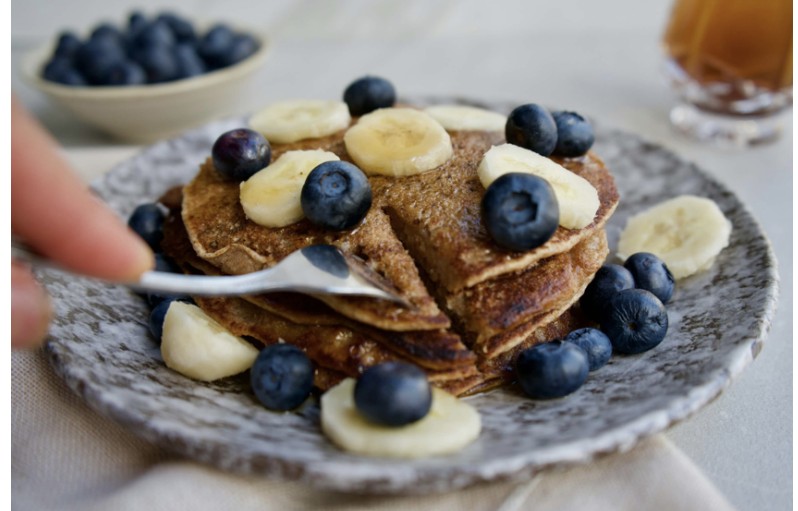
These Banana Protein Pancakes are a quick, healthy breakfast that actually keeps you full. Made with ripe bananas, eggs, and a boost of protein, they’re naturally sweet, fluffy, and kid-approved. No refined sugar, no complicated ingredients-just a few pantry staples mixed up in minutes. Perfect for busy mornings when you want something that feels like a treat but fuels you for the day.
Ingredients:
- 1 cup gluten-free flour
- 1 scoop protein powder
- 2 ripe bananas, mashed
- 2 eggs
- 1/2 cup unsweetened almond or coconut milk (adjust for batter consistency)
- 1 tsp baking powder
- 1/2 tsp cinnamon
- 1/2 tsp vanilla extract
- Pinch of sea salt (I used a bit more than a pitch and was happy I did!)
- Coconut oil or ghee for cooking
Instructions:
- Mash bananas and whisk with eggs, milk, and vanilla.
- In a separate bowl, mix flour, protein powder, baking powder, cinnamon, and salt.
- Combine wet + dry ingredients. Let rest for 5 minutes to thicken slightly.
- Cook on a greased skillet over medium heat, ~2-3 min per side. (I even burned them the first time I made this, and they still tasted great!)


